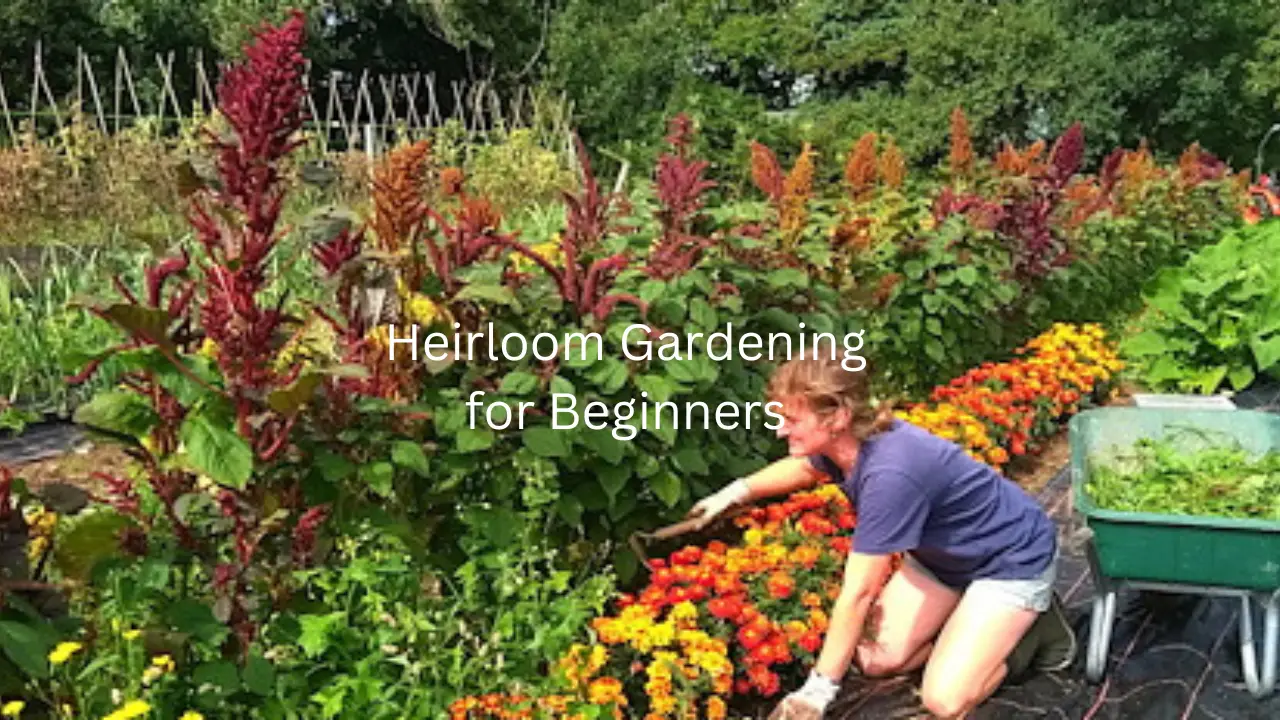
XIAOXUANFENG (10PCS) Halloween Ghost Walking Dog Statue: Ghost Walking His Ghost Dog Halloween Ghost Dog Statues Spooky Ghost Dog Halloween Figurine Home Tabletop Decorations (Off White, Extra Large)
84% OffHeirloom Gardening for Beginners: Cultivating Time-Honored Treasures
In today’s fast-paced world, where everything seems to be constantly changing, there’s a timeless beauty in preserving traditions and legacies. Heirloom gardening offers a unique way to connect with the past while nurturing the future. If you’re a beginner eager to embark on a journey into the world of heirloom gardening, this comprehensive guide is your starting point.
What Are Heirloom Plants?
Heirloom plants are time-tested varieties that have been passed down through generations. These plants, whether vegetables or flowers, have a rich history and are often treasured for their unique characteristics and flavors. Unlike modern hybrid varieties, heirlooms remain true to their original form.
Why Choose Heirloom Gardening?
The allure of heirloom gardening lies in its connection to history, biodiversity, and exceptional taste. By choosing heirloom plants, you contribute to preserving genetic diversity, creating a more resilient ecosystem, and savoring flavors that have delighted generations.
Getting Started with Heirloom Gardening
Selecting the Right Location
To begin your heirloom gardening journey, select a sunny spot with well-drained soil. Adequate sunlight is crucial for the growth of most heirloom plants.
Soil Preparation
Prepare your soil by enriching it with organic matter. Heirloom plants thrive in soil that is rich in nutrients and well-aerated.
Choosing Heirloom Seeds
Selecting the right heirloom seeds is essential. Start with a few easy-to-grow varieties for your first garden.
Planting Your Heirloom Garden
Proper Spacing and Depth
Follow seed packet instructions for proper spacing and planting depth. Heirloom seeds need adequate room to grow.
Watering Techniques
Water your garden consistently to keep the soil evenly moist. Avoid overwatering, as it can lead to root rot.
Mulching for Success
Mulch your garden to conserve moisture, suppress weeds, and regulate soil temperature.
Caring for Heirloom Plants
Pruning and Staking
Some heirloom varieties may require staking or pruning to support their growth.
Fertilizing
Apply organic fertilizers to provide essential nutrients for your plants.
Pest and Disease Management
Monitor your garden for pests and diseases, and use organic solutions whenever possible to maintain the integrity of heirloom gardening.
Harvesting and Saving Heirloom Seeds
Timing the Harvest
Harvest your crops at the peak of ripeness to enjoy the best flavor and save seeds for future seasons.
Seed Collection and Storage
Properly collect and store seeds to ensure their viability for years to come.
The Joy of Heirloom Blooms
Flowers in Heirloom Gardening
Include heirloom flowers in your garden to attract pollinators and add beauty to your space.
Creating a Pollinator-Friendly Garden
Heirloom gardens are havens for pollinators like bees and butterflies. Plant flowers that support these essential creatures.
Preserving Heirloom Traditions
Sharing Heirloom Produce
Share the bounty of your heirloom garden with friends and family, fostering a sense of community.
Joining Heirloom Gardening Communities
Connect with fellow heirloom gardening enthusiasts to exchange knowledge and seeds.
Common Challenges in Heirloom Gardening
Cross-Pollination Risks
Prevent cross-pollination by properly spacing and isolating varieties if necessary.
Dealing with Non-Heirloom Varieties
Be vigilant to avoid accidentally introducing non-heirloom plants into your garden.
A Bounty of Heirloom Vegetables
Tomatoes
Discover the wide range of heirloom tomato varieties, each with its own distinct flavor and appearance.
Peppers
Heirloom peppers offer unique tastes and come in various shapes, sizes, and colors.
Lettuce
Enjoy the crisp and diverse leaves of heirloom lettuce varieties.
Beans
Explore the world of heirloom beans, known for their rich flavors and textures.
Flourishing with Heirloom Flowers
Roses
Heirloom roses exude fragrance and charm, bringing elegance to any garden.
Sunflowers
Grow towering heirloom sunflowers that dazzle with their bright blooms.
Zinnias
Add bursts of color to your garden with heirloom zinnias, available in an array of hues.
Heirloom Gardening: A Family Affair
Involving Children
Teach children about the importance of heirloom gardening and involve them in the process.
Passing Down the Tradition
Create a legacy by passing down heirloom seeds and gardening wisdom to future generations.
The Sustainability of Heirloom Gardening
Reducing Environmental Impact
Heirloom gardening promotes sustainability by conserving genetic diversity and reducing the need for chemical inputs.
Promoting Biodiversity
Contribute to biodiversity conservation by growing heirloom plants that support a wide range of pollinators.
Conclusion: Nurturing the Past, Growing the Future
Heirloom gardening isn’t just about growing plants; it’s about cultivating traditions, preserving biodiversity, and connecting with the past. As you embark on your journey, remember that you are not just a gardener; you are a steward of history and a nurturer of the future.
Frequently Asked Questions (FAQs)
- What is the difference between heirloom and hybrid plants?
Heirloom plants are open-pollinated, true-to-type varieties with a rich history, while hybrids are created by cross-breeding different plant varieties for specific traits.
- Can I save seeds from hybrid plants?
While you can save seeds from hybrid plants, they may not produce offspring with the same characteristics as the parent plant.
- Are heirloom plants more susceptible to pests and diseases?
Not necessarily. Proper care and organic gardening practices can help heirloom plants thrive and resist common garden issues.
- How can I find heirloom seeds and plants?
Many online and local nurseries offer heirloom seeds and plants. You can also exchange seeds with fellow gardeners in heirloom gardening communities.
- What is the significance of heirloom gardening in today’s world?
Heirloom gardening helps preserve genetic diversity, promote sustainability, and connect people with their cultural and culinary heritage.





